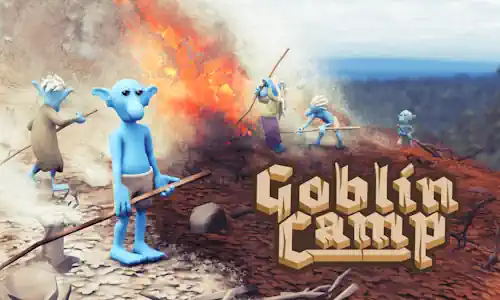Goblins and the Underworld
So what do goblins have to do with Finnic mythology anyway?
Across Europe and Asia, from Ireland to Japan, there’s a whole range of traditions about mythical people who live underground. These underground people are different from humans, but they have their own parallel society that in many way mirrors that of humans. Sometimes they can be interacted with as if they were humans, and sometimes they’re dangerous to humans: they may attack people or kidnap them into the underground world. In many places, there are stories of these people stealing children and replacing them with one of their own, known as a “changeling”.
In Europe, these stories used to be especially prominent in Northern Europe and the British Isles. The underground folk came to be known as fairies in Ireland and the UK, where they merged with lots of other stories about otherworldly beings. In his Novel of the Black Seal (1895), author Arthur Machen suggested the idea that these fairies might be the remnants of some pre-human inhabitants of the British Isles, a notion that greatly inspired H.P. Lovecraft.
On the European continent, one of the names attached to these creatures was goblin. The English word probably comes from Old French gobelin, attested in 1195 and earlier in Latin as gobelinus in Orderic Vitalis, some time before 1141. Beyond that, it’s not clear where the word comes from, but its German cognate is kobold, which contains the root for a cave or hollow in a rock. So both goblins and kobolds are creatures that live in caves or literally in rocks, and are attached to the same tradition of underground people. Incidentally, this also means that the Latin for Goblin Camp would be Castra Gobelini.
The current notion of goblins comes from J.R.R. Tolkien, who called the evil underground creatures in the Hobbit (1937) goblins. Tolkien drew on the traditions in the British Isles, as well as the Scandinavian sagas, and even though he started using the term orc for the same creatures in the Lord of the Rings (1954), goblin stuck around as a name for their smaller cousins. Then when Dungeons & Dragons came about, it systematized the idea of various different kinds of “goblinoids” like goblins, hobgoblins and so on. D&D led to Warhammer, where I once harbored fond dreams of a tournament army of hundreds of green little goblins. The only trouble would have been to paint them all!
But both in terms of the word itself and the history, the goblins of modern-day fantasy are descended from this same Eurasian tradition of underground people. Very similar stories exist in the Nordic countries, among the Scandinavians, Sámi and Finns. In Finland, the underground people are known by the word maahinen, plural maahiset, “earth-people”. In old tales from what is now Finland, the maahiset lived underground, where they had a society that was in many ways similar to that humans had above ground: they lived in families, had their own houses and farms, and kept cattle. The stories vary wildly on what size they were: sometimes they’re tiny, sometimes they’re the same size as humans. There’s almost nothing on what they looked like, so on that score, we’ve used our creativity.
The underground people in Finnish tales could be dangerous. If an unwary traveller slept on a path, they might be inadvertently blocking the way of the maahiset, who would retaliate. There are stories of people being kidnapped by them and taken into the underground realm, where if they accepted food or drinks, they would have to stay in the underworld forever - a very similar idea to the ones associated with fairies in the British Isles. Sometimes people could bargain successfully with the maahiset, gaining wondrous items. In some stories, people figure out a trick to capture some of their cattle, or even one of the underground folk themselves: there’s a story attested from several places in Finland of a man gaining a maahinen wife!
It seems fairly clear that the Finnish maahinen tradition is very similar to the other European and Asian traditions of underground people. So why not call them goblins? We’re working with the same tradition as Tolkien was, only our version of it. I would even go so far as to say that given that both words refer to broadly the same tradition, it would be entirely acceptable to translate maahinen as goblin. Our goblins are rooted in the three main foundations of Goblin Camp: Finnic mythology, the fantasy tradition, and our own creativity.
In the three-part division of the world in Finnic mythology, the goblins come from the underworld. As our goblins emerge from below the earth into the middle world where we live, they’ll find much that’s familiar to them. After all, their own society there will have been much like those we know. But they as they make their homes in their new world, may also come across some very strange, even scary things they’ve never seen before. Another common thread joining many of the traditions about underground folk is that time flows differently in the underworld. Perhaps quite a bit of time has actually passed since the goblins were last above ground?
